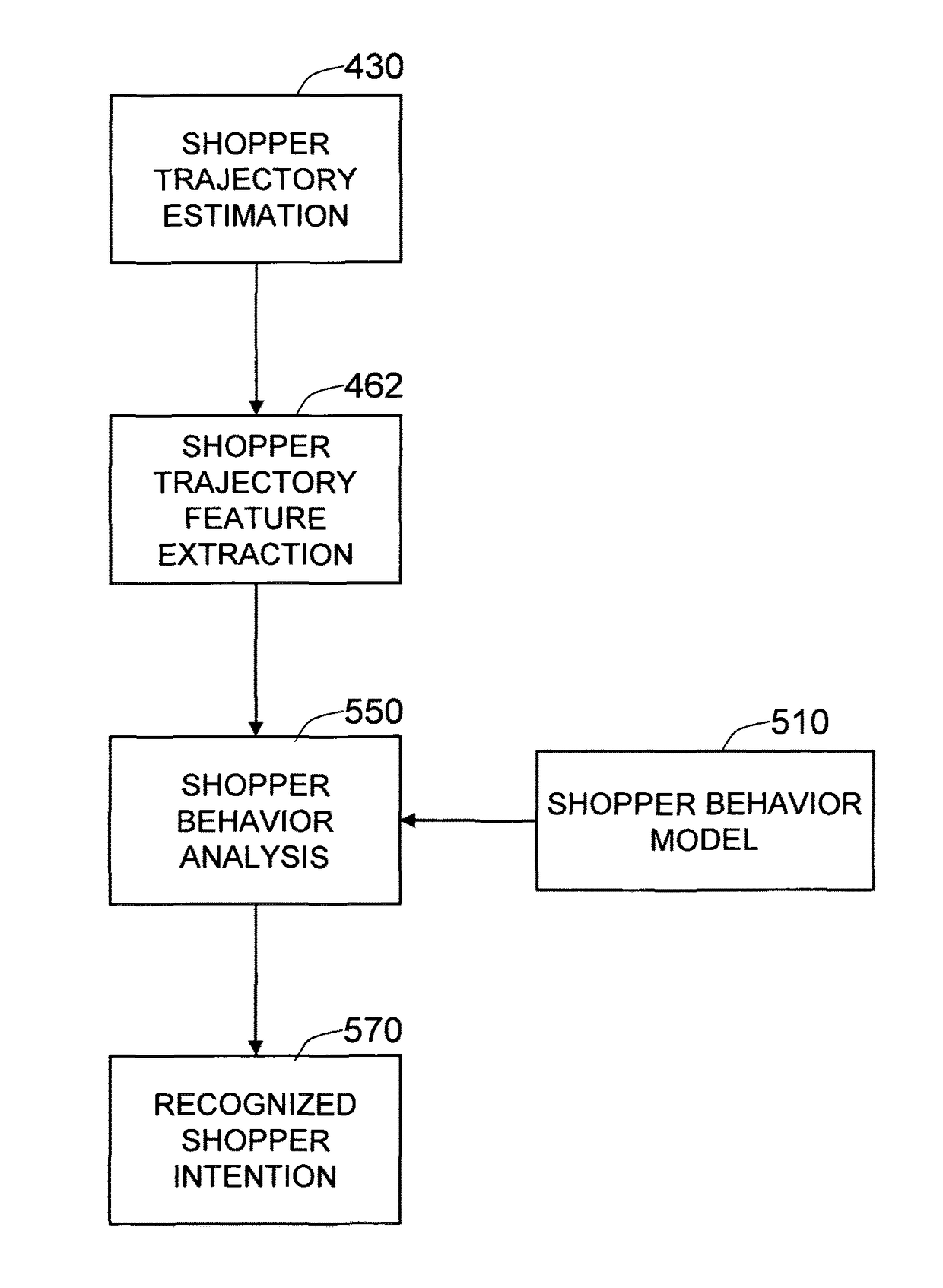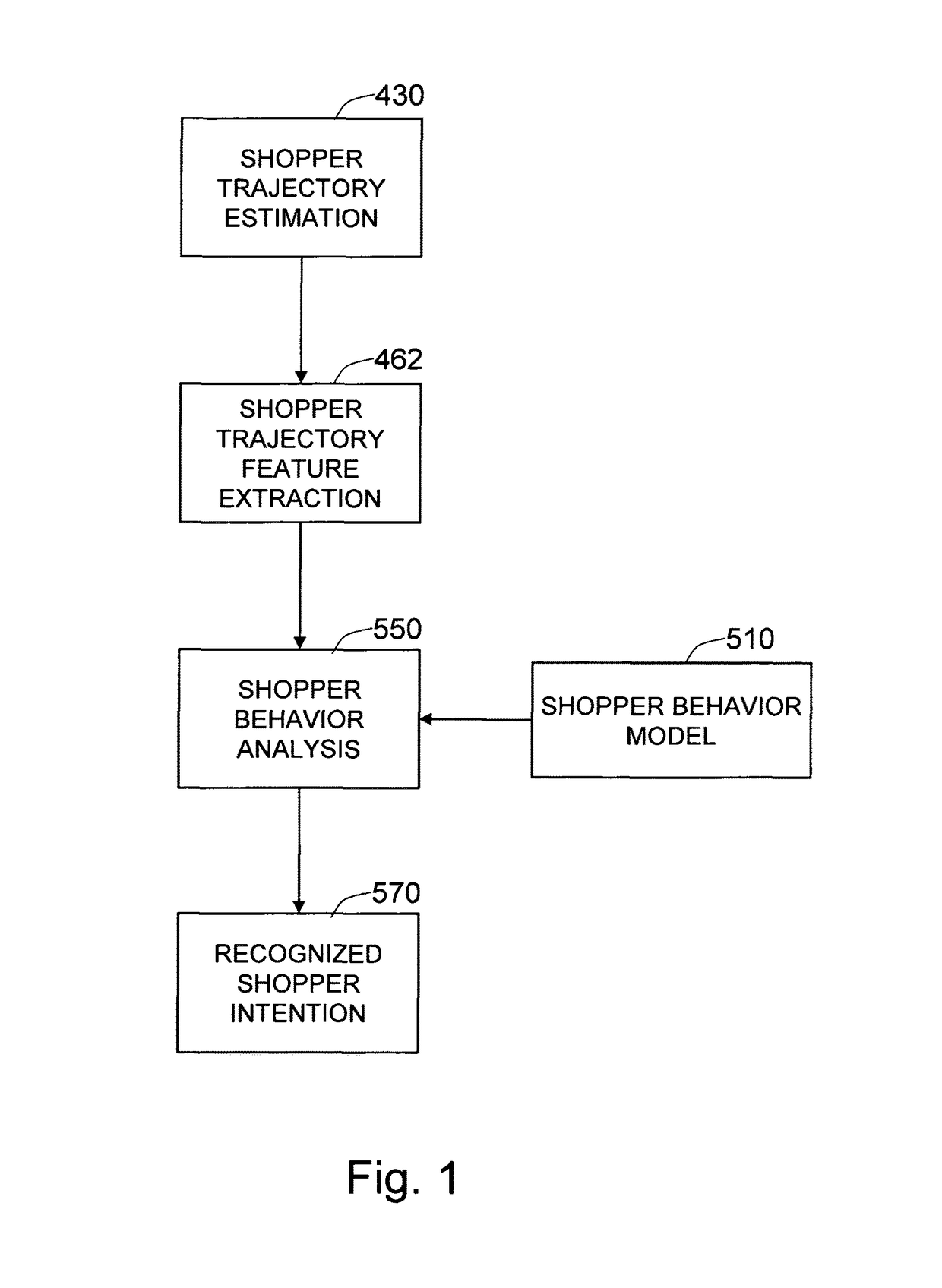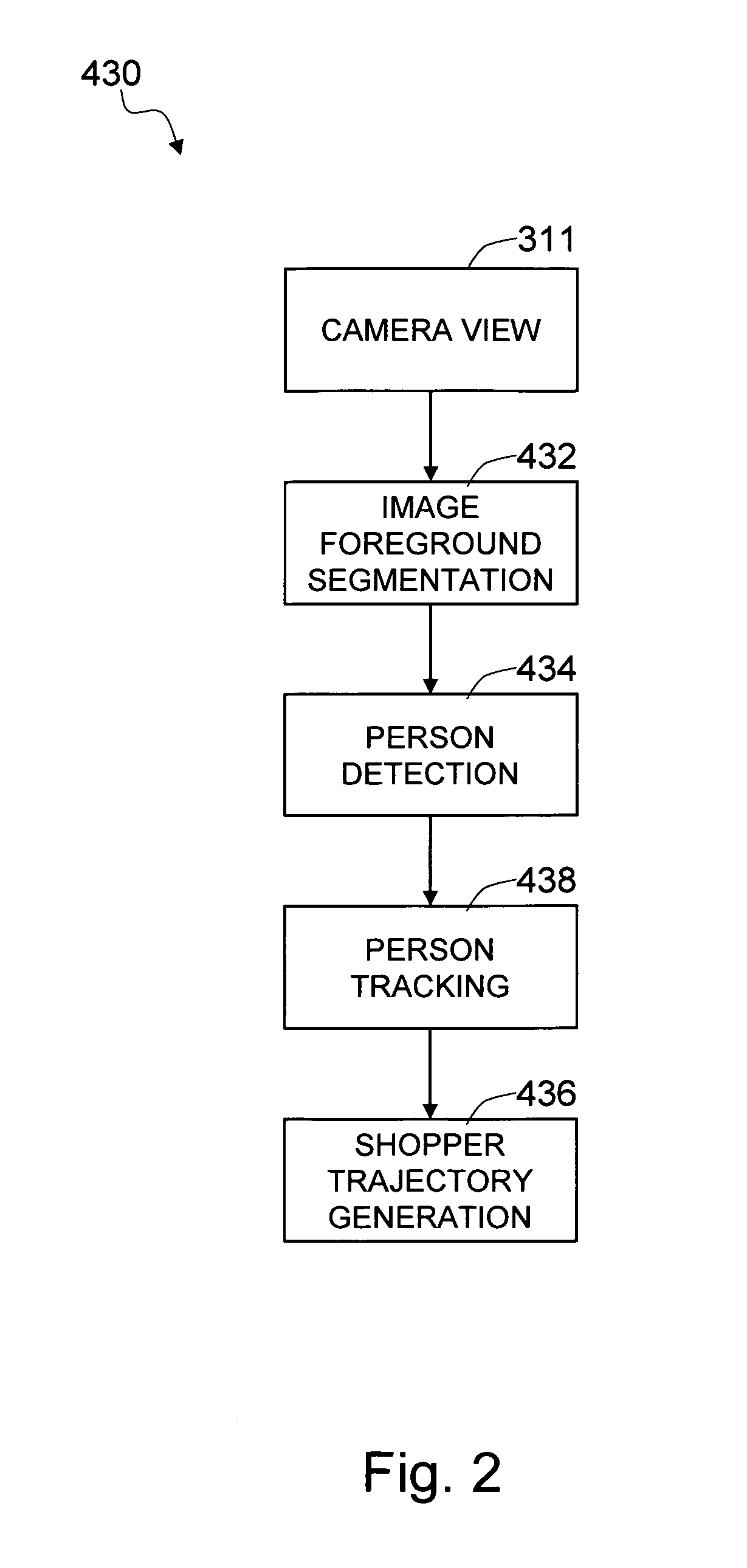Method and system for recognizing the intentions of shoppers in retail aisles based on their trajectories
a technology of intentions and shopping carts, applied in probabilistic networks, instruments, computing models, etc., can solve the problems of insufficient advanced video analytic technology, inability to provide such information alone, and inability to recognize very fine details of human behavior in the current state of the ar
- Summary
- Abstract
- Description
- Claims
- Application Information
AI Technical Summary
Benefits of technology
Problems solved by technology
Method used
Image
Examples
Embodiment Construction
[0045]FIG. 1 is an overall scheme of the system in a preferred embodiment of the invention. The shopper trajectory estimation 430 step detects and tracks shoppers from an input video sequence and generates their trajectories. Then the shopper trajectory feature extraction 462 step derives dynamic features from the raw trajectory that provide information relevant to recognizing shopping behaviors. The shopper behavior model 510 concerns the relationship between the trajectories of shoppers and their behavior—the behavior revealing the intentions of the shoppers. In one of the exemplary embodiments, the shopper behavior model consists of the relationship between the trajectory dynamics (position, speed, and orientation of the trajectory) and atomic behaviors (walking, browsing, approaching, and interaction). Given a shopper's trajectory and the extracted shopper trajectory features 460, the shopper behavior analysis 550 step then analyzes them based on the shopper behavior model 510. ...
PUM
 Login to View More
Login to View More Abstract
Description
Claims
Application Information
 Login to View More
Login to View More - R&D
- Intellectual Property
- Life Sciences
- Materials
- Tech Scout
- Unparalleled Data Quality
- Higher Quality Content
- 60% Fewer Hallucinations
Browse by: Latest US Patents, China's latest patents, Technical Efficacy Thesaurus, Application Domain, Technology Topic, Popular Technical Reports.
© 2025 PatSnap. All rights reserved.Legal|Privacy policy|Modern Slavery Act Transparency Statement|Sitemap|About US| Contact US: help@patsnap.com



